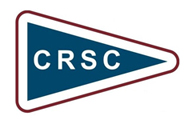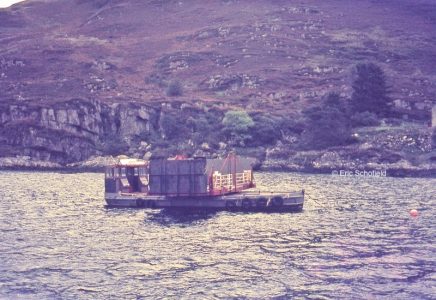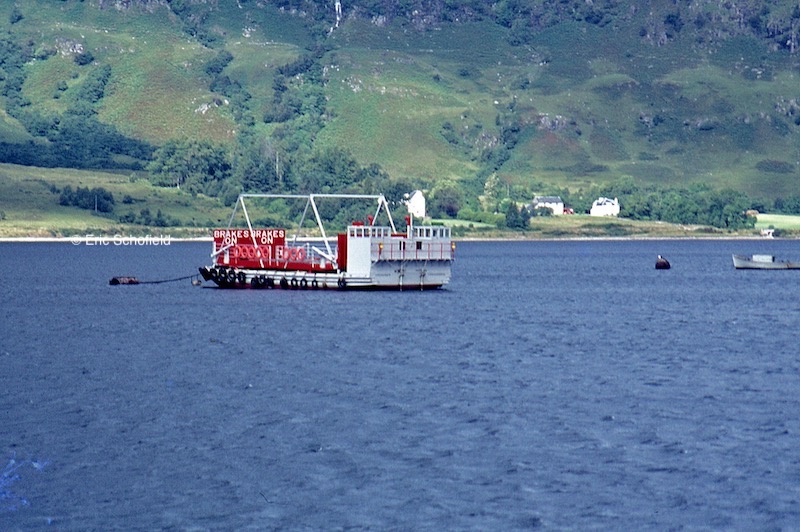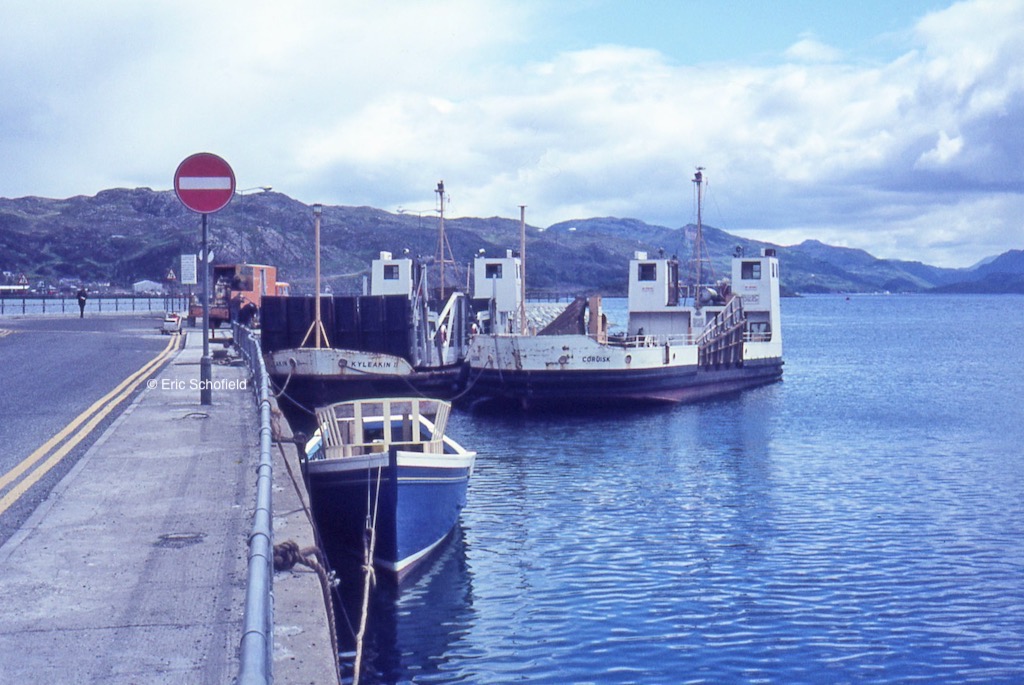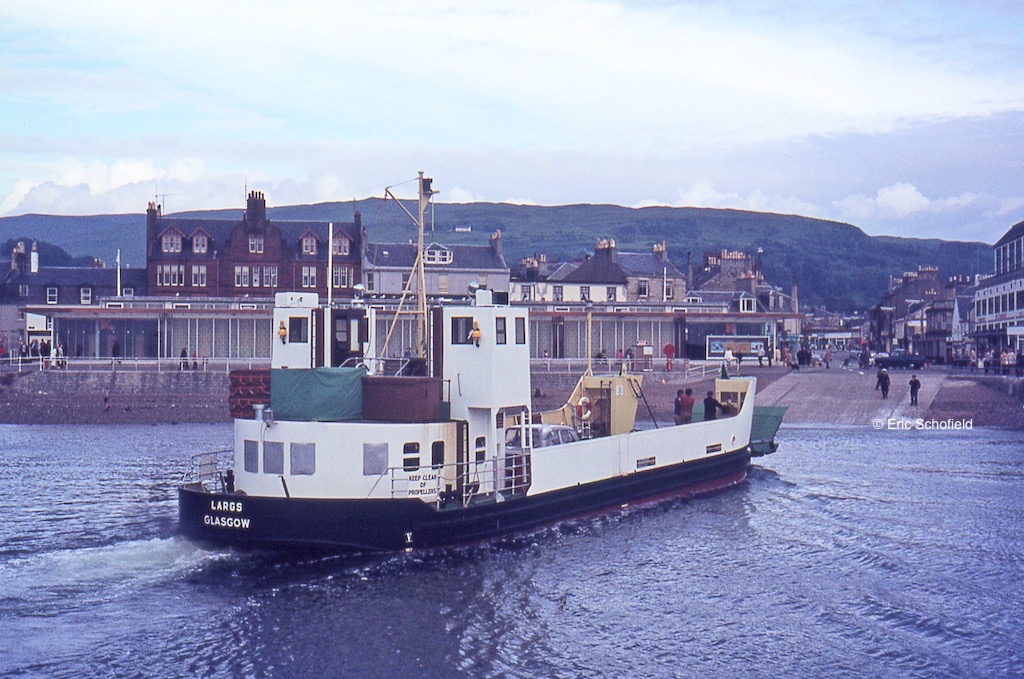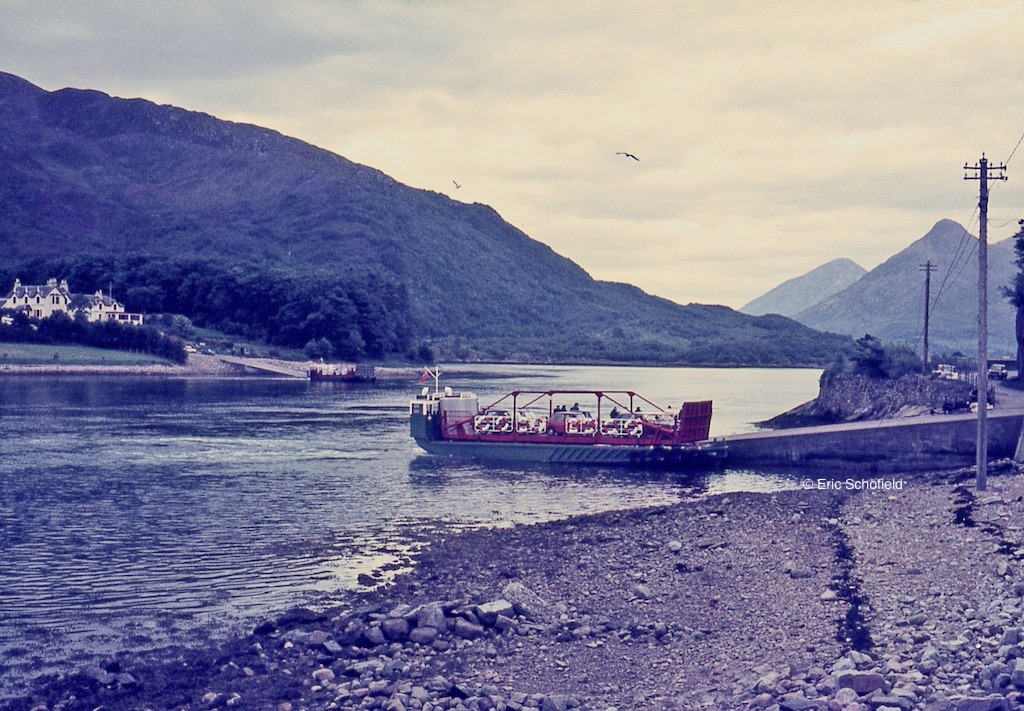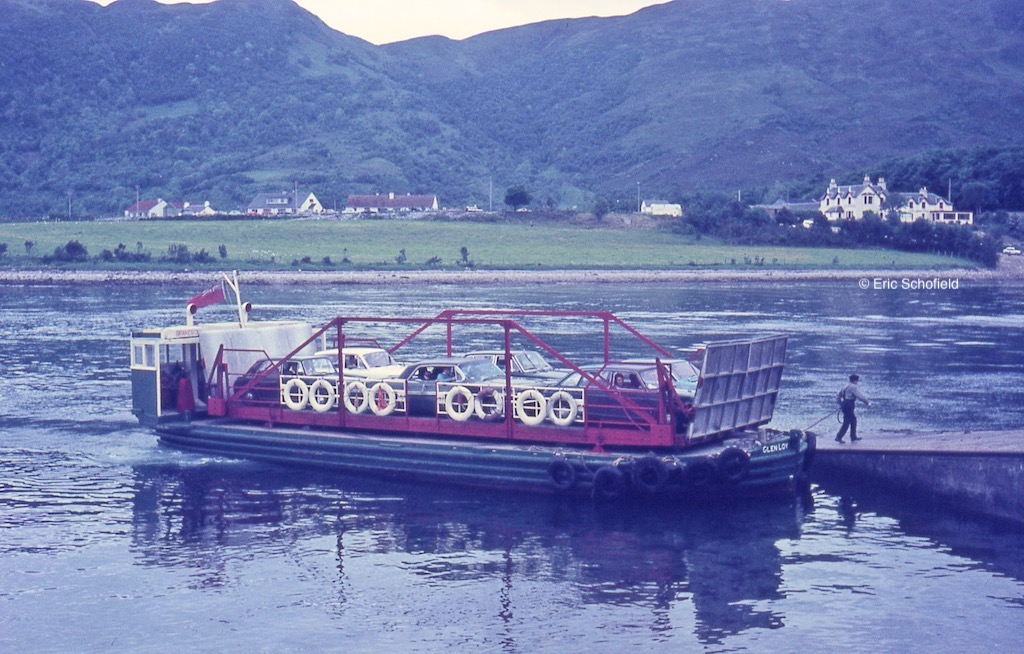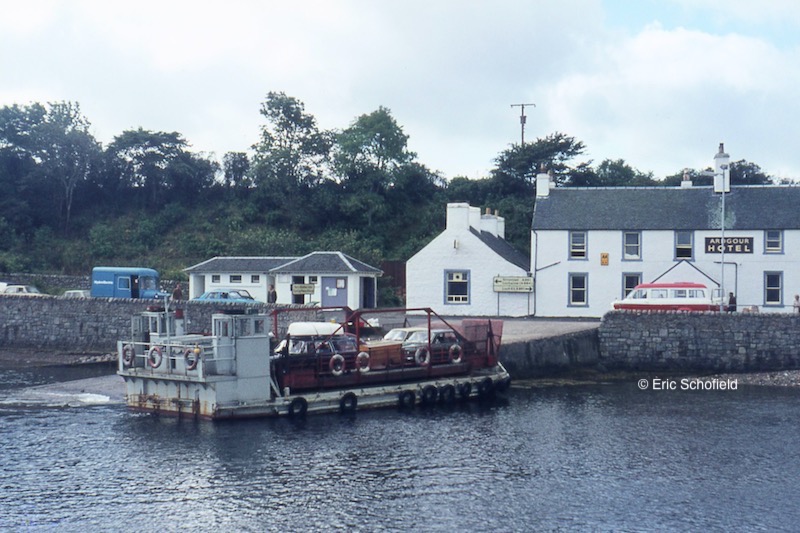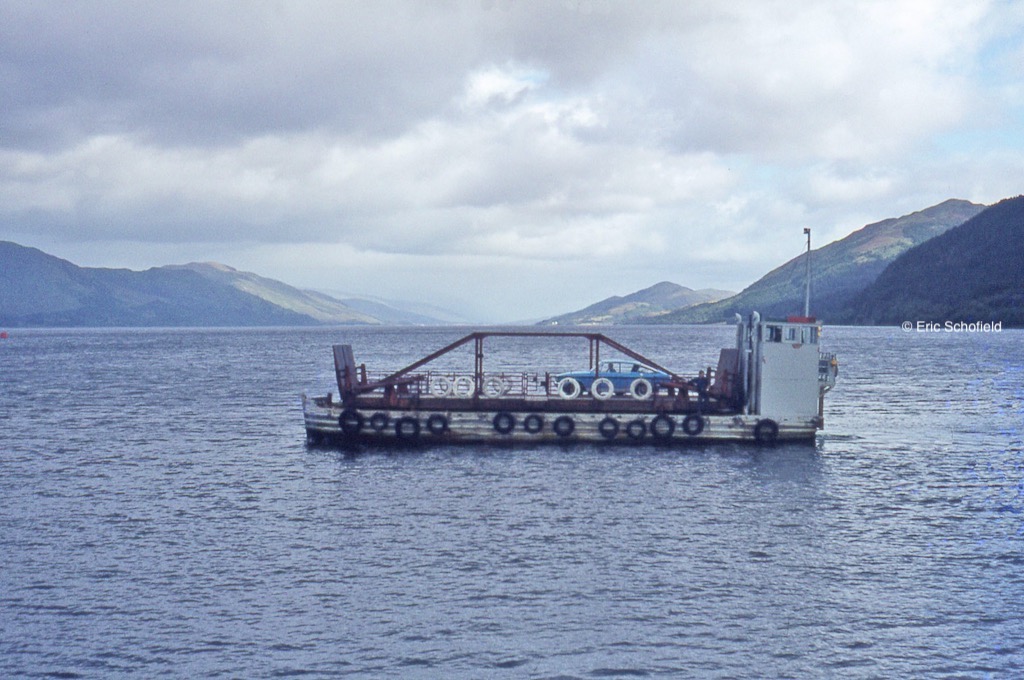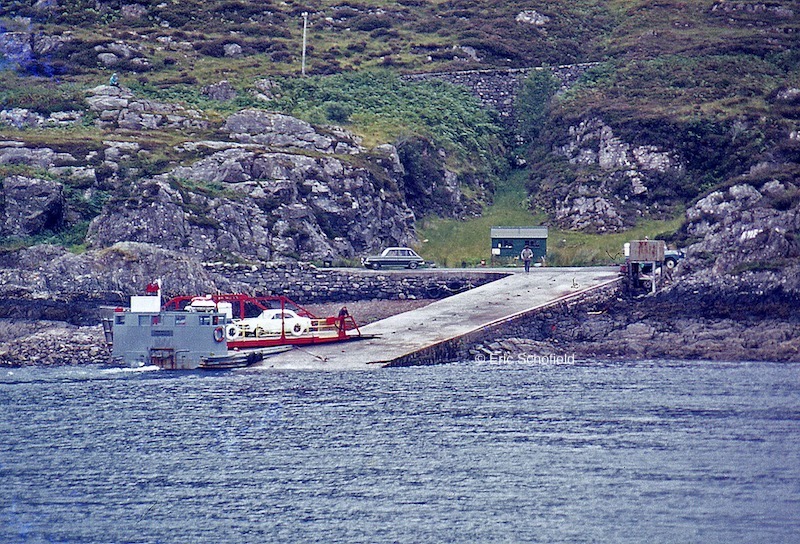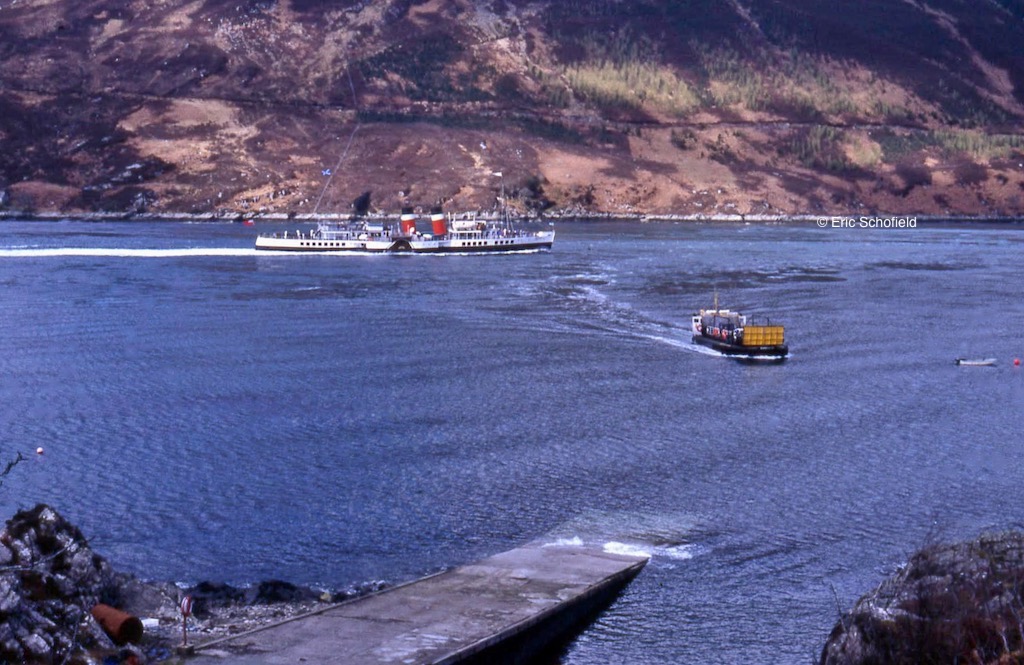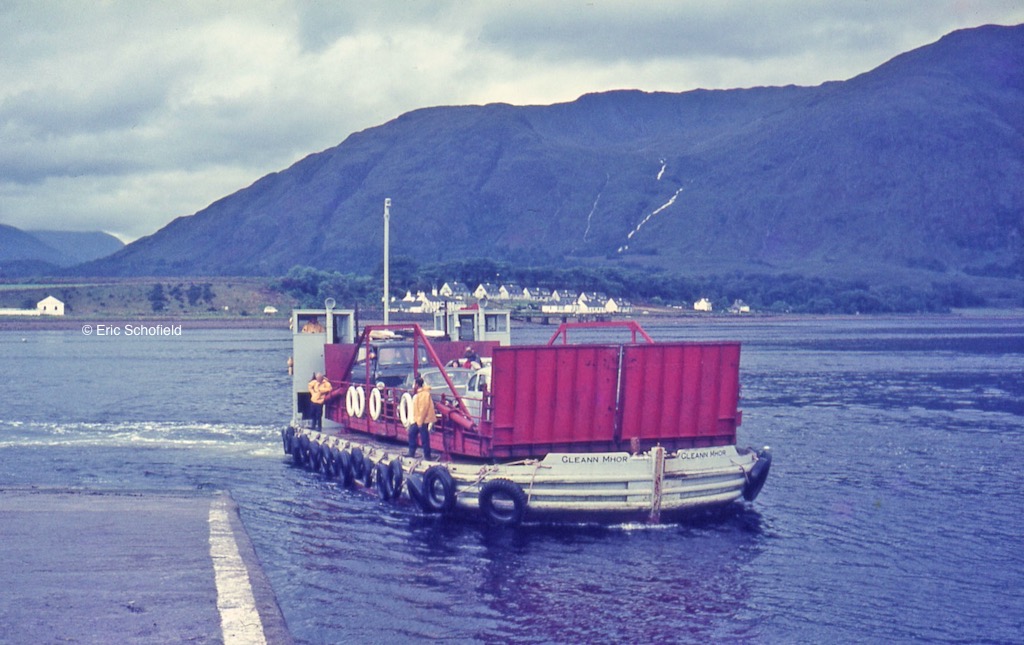
‘Like many before me, I tended to overlook the part played by turntable ferries in the Scottish transport scene’ — but Eric Schofield was sufficiently aware of a good photographic opportunity to capture Gleann Mhor at Corran, Loch Linnhe, on 2 September 1970
Eric Schofield’s travels to the highlands and islands have always had a whiff of insatiable adventure about them. Luckily for us, he occasionally stumbled upon that cinderella of the Scottish maritime scene, the turntable ferry, and kept his tickets as a reminder of his discoveries.
When travelling Scotland’s west coast back in the 1960s and 70s, I encountered some of the small turntable ferries that were unique to the Highlands, and to my shame — like many before me — I tended to overlook the important part these little ships played in the transport scene.
However, a few of the tickets for crossings I made have survived in my collection. Other than one occasion when bad weather prevented possible sailings elsewhere, I cannot say I ever went out-of-my-way to photograph this special class of vessel, but whenever the opportunity arose, unexpectedly or not, the camera was put to good use recording the occasion.
Perhaps the most unusual event regarding any of these ferries that I witnessed occurred late on the Tuesday evening of 22 August 1967 when heavy cloud cover made it too dark for worthwhile photography. Lochnevis, on the Oban/Fort William service that day, was returning from Fort William and hove-to off Corran to offload on to Ben Keil four passengers who had mistakenly assumed they were on a short evening excursion out of Fort William, most probably an occurrence that was far from unique.
The picture of Appin Chief at the buoy off Glenelg was obtained from on board Western Isles. Back in the 60s and into the early 70s, Bruce Watt offered live-aboard weekly excursions, Saturday to Saturday, on Western Isles in the spring and autumn, fitted in between his contracted obligation to provide the Saturday Small Isles service for MacBraynes.
Of that service the 1300 afternoon sailing from Mallaig via Eigg and Rhum to Canna, and the Saturday early morning inward sailing at 0700 from Canna the following weekend, were inclusive for the weekly excursionists. The week’s cruising itinerary varied subject to weather and other circumstances, giving rise on our chosen week to a fascinating Friday sail from Portree via Loch Carron and Loch Duich, with a close-up view of Eilean Donan castle, then sailing close past Appin Chief to Armadale before heading for an overnight berth at Canna Pier.
The shot of Kyleakin II and Coruisk at Kyleakin, the withdrawn ferries laid up at the old jetty, was taken when we were up at Skye to sample the new double-ended 1970/71-built CalMac ferries Kyleakin and Lochalsh.
Coruisk (with sister-ship Broadford and quasi sister-ship Portree) were Skye ferries fitted with wing flap-style side-ramps, a half-way house from the turntable style to the bow-only or bow and stern ramps of later designs.
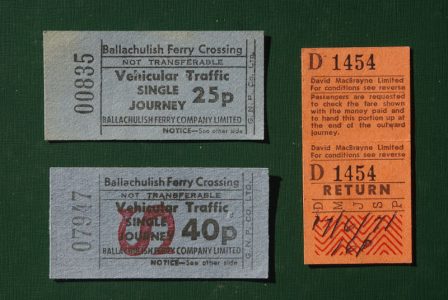 The orange ticket illustrated here was issued for our trip to the island of Scalpay on Lochalsh II. The stated 12.5% increase in fares can be noted – the summer timetable showed a 14p fare but we were charged 16p as hand-written on the ticket, a 14.25% increase. The visit to Scalpay was part of an 8-day Car Rover holiday, though our visit to the island on that occasion was just as foot passengers.
The orange ticket illustrated here was issued for our trip to the island of Scalpay on Lochalsh II. The stated 12.5% increase in fares can be noted – the summer timetable showed a 14p fare but we were charged 16p as hand-written on the ticket, a 14.25% increase. The visit to Scalpay was part of an 8-day Car Rover holiday, though our visit to the island on that occasion was just as foot passengers.
Behind the partially dismantled Inbhir Nis, the former Kessock ferry seen at Inverness, I discovered and (like a true anorak) photographed the scrapped turntable, discarded on the uneven ground.
Hopefully you will enjoy looking at this short selection of pictures representing these hard-working, indispensable transport links in the often remote corners of the west coast.
For the full history of these little ships one cannot do better than turn to the superb 2013 publication Scotland’s Turntable Ferries, jointly researched and written by Club member Robert Beale (with John Hendy). At the time of writing, anyone looking for this book can go online at skyeferry.co.uk, owners of Glenachulish, the last remaining turntable ferry in operation, and click on ‘shop’ to purchase a copy.
All images on the CRSC website are protected by copyright law. Please do not reproduce them on Facebook, Pinterest or any other public platform without gaining written permission: info@crsc.org.uk
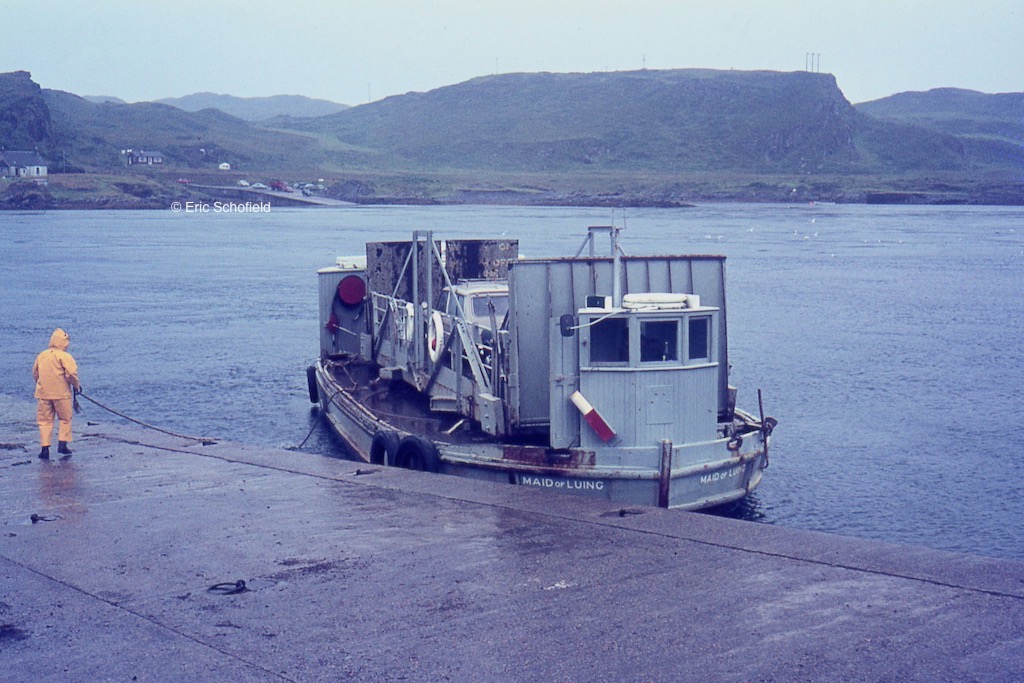
Maid of Luing showing off her unique bow wheelhouse at Cuan Ferry on 16 August 1972. Eric recalls that it was a wet and windy day at Oban, ‘so why not go and see the Cuan ferry?’
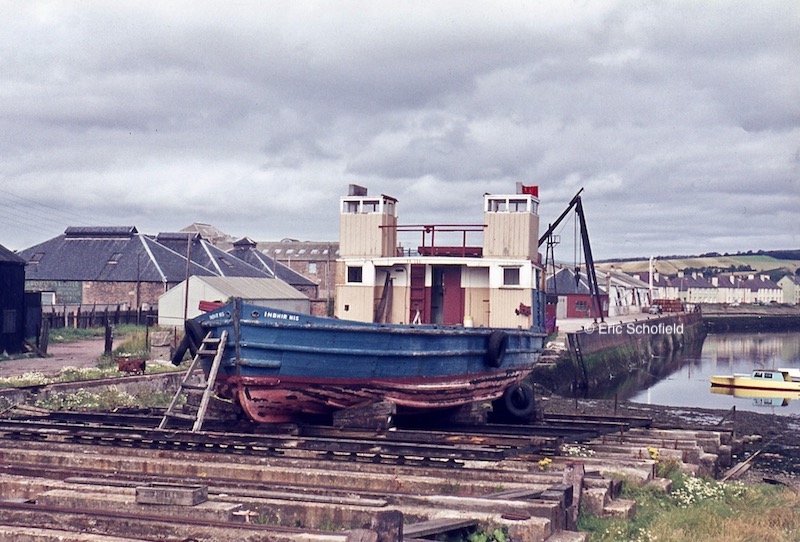
Former Kessock ferry Inbhir Nis in partly dismantled state (minus turntable) at Inverness on 19 August 1973
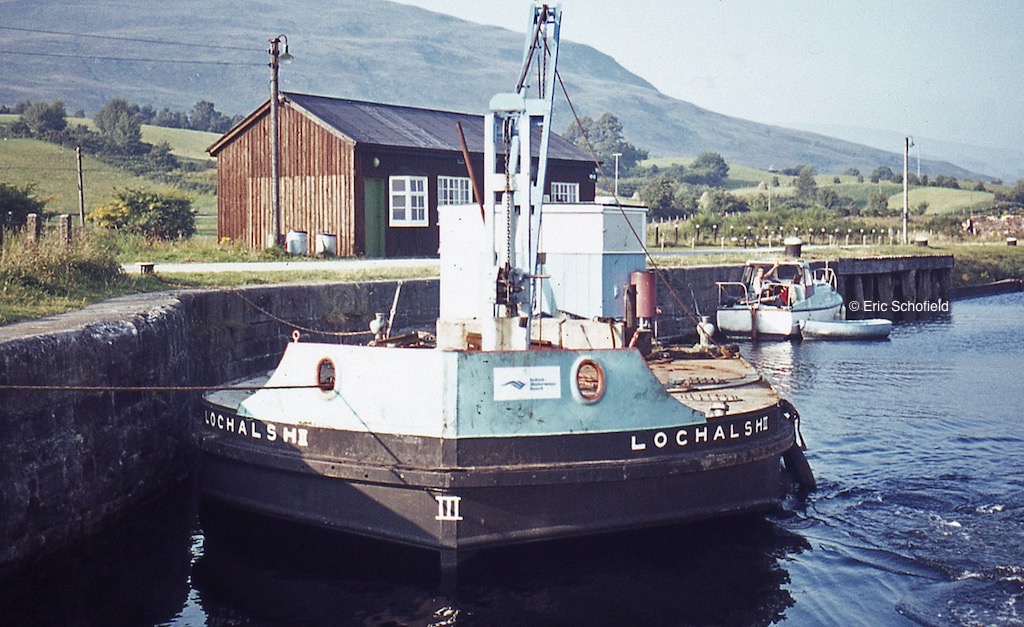
Days of glory gone: the 1951 Lochalsh was renamed Lochalsh II by the time Eric took this picture of her as a Caledonian Canal crane boat on 2 September 1972 — she was barely recognisable as a former Skye ferry
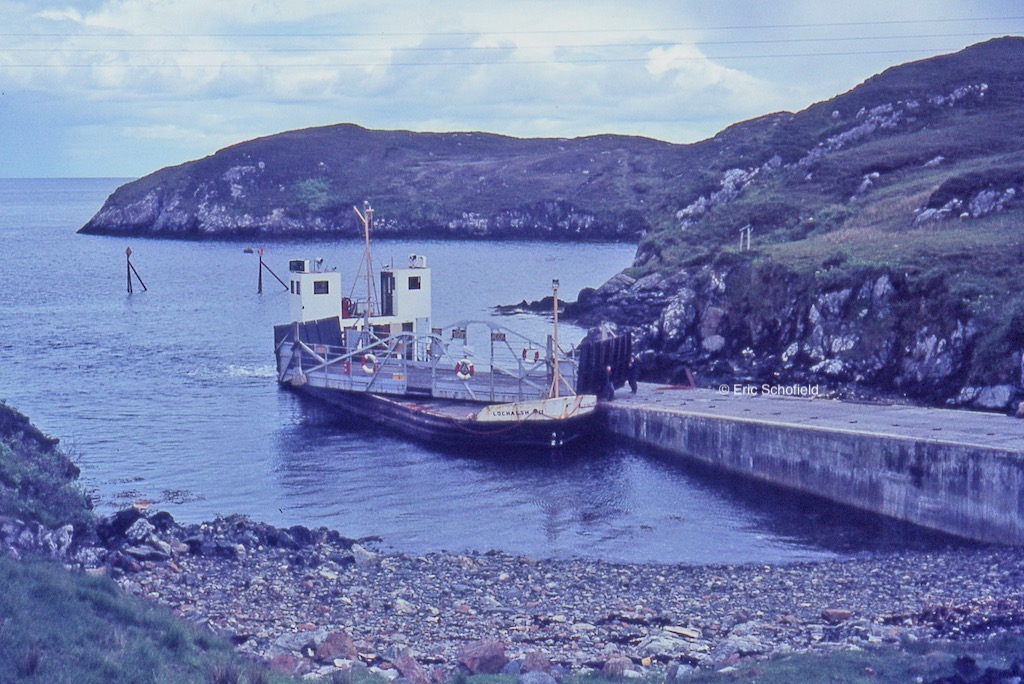
The 1957 Skye ferry Lochalsh was renamed Lochalsh II by the time she became the Scalpay ferry, in which role she is seen on 17 June 1971. She was later renamed Scalpay. Eric crossed as a foot passenger while visiting the Outer Hebrides during an eight-day Car Rover holiday. His passenger ticket is the orange one pictured earlier on the right hand side
Published on 29 May 2020
